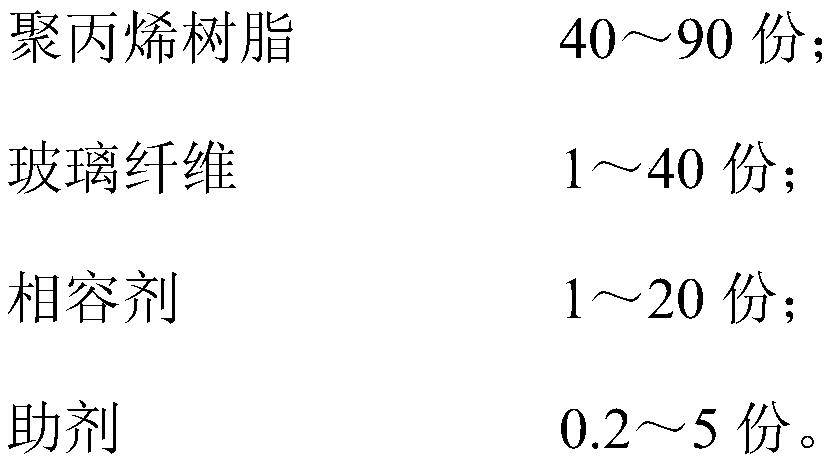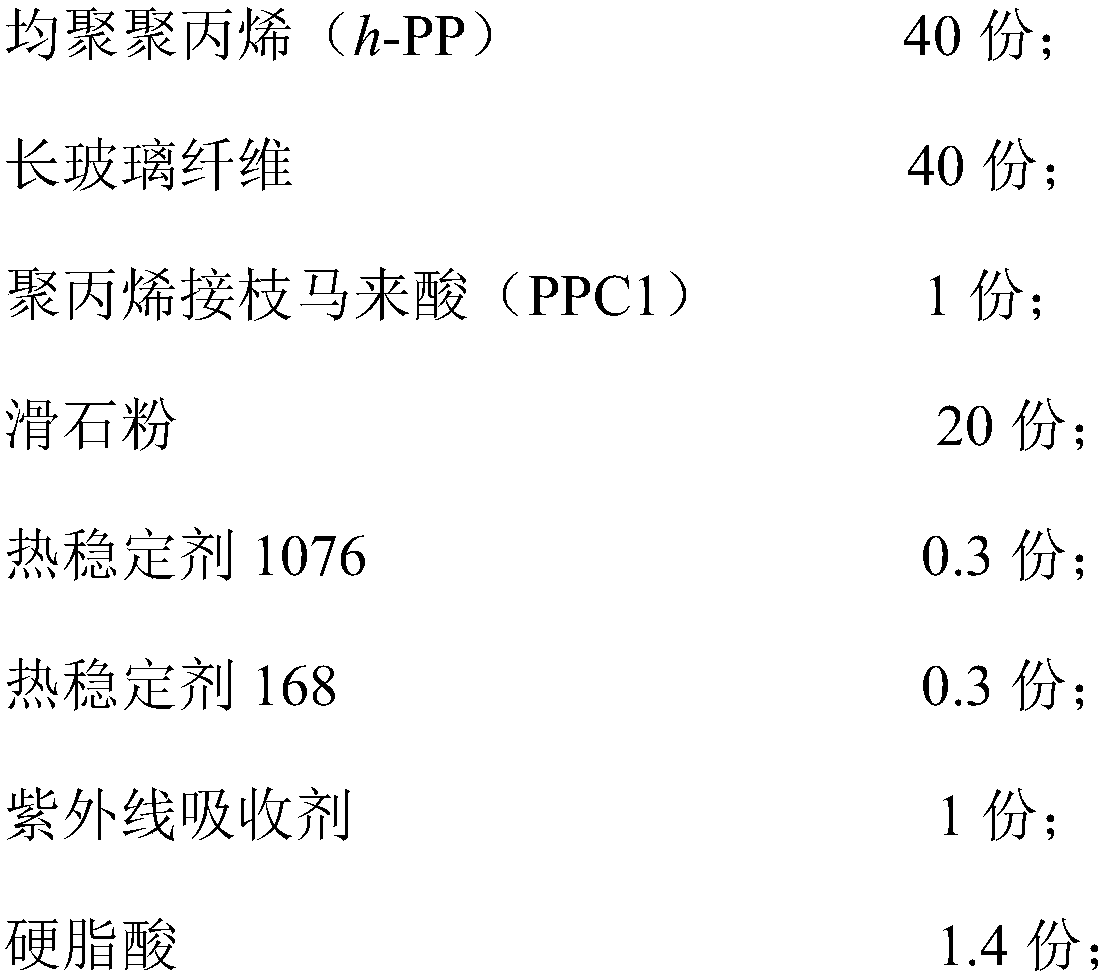Low-emission glass fiber reinforced polypropylene composite material and preparation method thereof
A composite material and polypropylene technology, applied in the field of low-emission glass fiber reinforced polypropylene composite materials and its preparation, can solve the problems of harsh processing conditions, high energy consumption, material performance attenuation, etc., to avoid overreaction, simple process, Facilitating the exclusion effect
- Summary
- Abstract
- Description
- Claims
- Application Information
AI Technical Summary
Problems solved by technology
Method used
Image
Examples
Embodiment 1
[0033] This embodiment provides a low emission glass fiber reinforced polypropylene composite material and a preparation method thereof.
[0034] This low emission glass fiber reinforced polypropylene composite material comprises the following raw materials (by weight):
[0035]
[0036] The preparation method of the above-mentioned low emission glass fiber reinforced polypropylene composite material, the steps are as follows:
[0037] (1) mixing the polypropylene resin, compatibilizer, filler and auxiliary agent of described weight portion, obtain compound;
[0038] (2) Place the compound described in step (1) in the main feeding port of the single-screw extruder with microwave as the heat source, place the long glass fibers in the measuring feeding port of the extruder, and set the microwave temperature to 150°C , the microwave power is 28kW, and the microwave frequency is 250GHz;
[0039] (3) cooling the molten mixture extruded in step (2) to below the melting point, a...
Embodiment 2
[0041] This embodiment provides a low emission glass fiber reinforced polypropylene composite material and a preparation method thereof.
[0042] This low emission glass fiber reinforced polypropylene composite material comprises the following raw materials (by weight):
[0043]
[0044]
[0045] The preparation method of the above-mentioned low emission glass fiber reinforced polypropylene composite material, the steps are as follows:
[0046] (1) mixing the polypropylene resin, polyolefin elastomer, compatibilizer, filler and auxiliary agent of said weight portion to obtain a compound;
[0047] (2) Place the compound described in step (1) in the main feeding port of the twin-screw extruder with microwave as the heat source, place the long glass fibers in the measuring feeding port of the extruder, and set the microwave temperature to 180°C , the microwave power is 20kW, and the microwave frequency is 100GHz;
[0048] (3) cooling the molten mixture extruded in step (2...
Embodiment 3
[0050] This embodiment provides a low emission glass fiber reinforced polypropylene composite material and a preparation method thereof.
[0051] This low emission glass fiber reinforced polypropylene composite material comprises the following raw materials (by weight):
[0052]
[0053]
[0054] The preparation method of the above-mentioned low emission glass fiber reinforced polypropylene composite material, the steps are as follows:
[0055] (1) mixing the polypropylene resin, polyolefin elastomer, compatibilizer, filler and auxiliary agent of said weight portion to obtain a compound;
[0056] (2) Place the compound described in step (1) in the main feeding port of the twin-screw extruder with microwave as the heat source, place the long glass fibers in the measuring feeding port of the extruder, and set the microwave temperature to 200°C , the microwave power is 5kW, and the microwave frequency is 30GHz;
[0057] (3) cooling the molten mixture extruded in step (2) ...
PUM
 Login to View More
Login to View More Abstract
Description
Claims
Application Information
 Login to View More
Login to View More - R&D
- Intellectual Property
- Life Sciences
- Materials
- Tech Scout
- Unparalleled Data Quality
- Higher Quality Content
- 60% Fewer Hallucinations
Browse by: Latest US Patents, China's latest patents, Technical Efficacy Thesaurus, Application Domain, Technology Topic, Popular Technical Reports.
© 2025 PatSnap. All rights reserved.Legal|Privacy policy|Modern Slavery Act Transparency Statement|Sitemap|About US| Contact US: help@patsnap.com



